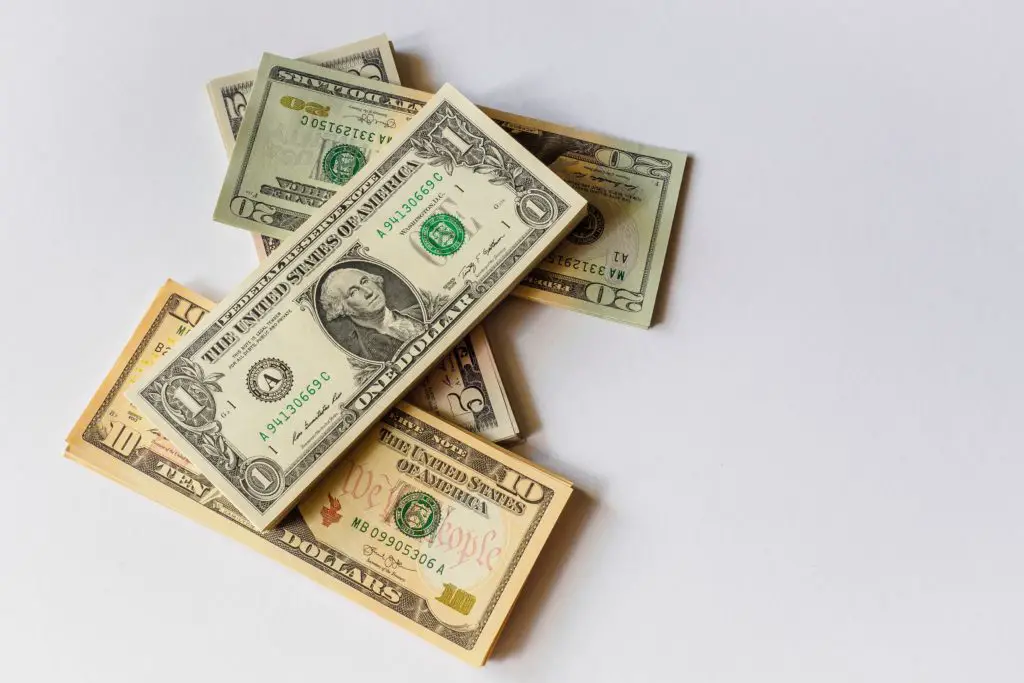Introduction
Despite the constant up and down movements of inflation rates globally and within the United States, the US dollar is among the highly valued international currencies and the global reserve currency. Therefore, it is a highly sought-after tool for effective comparison, even in terms of international trade and global stock exchanges. However, today’s dollar is valued far less than in its glory days due to inflation, which might come as a shock seeing how legitimate it still is. So what factors led to the gradual and slow decline in the valuation of the US dollar?

Emerging US economy and 100 Dollar valuation in 1960
Since 1960, the fall of the US dollar valuation has been a direct result of 3 to 4 different causes: a steady increase in commodities forcing the fall of the dollar. This is called inflation. Other causes are account deficit (caused by large imports and fewer exports), lower interest rates, and slower growth rates.
How much does $100 is equal to todays money?
People today, aside from the smart ones, won’t have many ideas about how much a hundred dollars could get them in 1960 and the years that followed.
To put it simply, $100 in the year 1960 would equal $976.77 in today’s money, but how exactly did we arrive at closing to $10 in valuation in 62 years? The answer is inflation. Inflation has existed ever since the concept of money has been in place, which even predates currency to buy, sell, or acquire a commodity.
Now since inflation kept rising at the rate of 3.80% or close to 4% on year on year basis, the price increase in 62 years came to as high as 878%, meaning that in today’s market, what was worth only $100 back then would now be worth 9.77 times higher.
For example, people could buy most house essentials, including kitchen items, car repair tools, fashionable clothing, and a nice television set, and still have a few bucks left to buy some standard furniture, all of which at the price of $100 while spending a hundred bucks today would only get people groceries for the whole month.
Yet to fully appreciate the value of $100, knowing what strength even a dollar had during the 60s is necessary.
One dollar was buying power in 1960:
Once $1 reaches 9.77 dollars over 62 years, it indicates the overall devaluation the currency has gone through in its “real value .” In simple terms, one dollar pays for fewer items at the store because of a stagnant decline in its worth.
Products for the price of $1 in the 1960s
Coffee:
A popular household commodity even after six decades, it would be served along with warm delicacies during breakfast and lunch. However, when adjusted for inflation, an earning American citizen of today could easily buy over 1 pound of coffee for one dollar.
Coffee prices were different across states ranging from 80 to 70 cents on average across most of the eastern coast and in small towns for about 50 cents per pound. For comparison, Americans in 2022 will have to spend over $4 to get 1 pound of coffee and enjoy its flavor for the next few days.
Medicine:
Specifically a 100-count bottle of aspirin medicine. If buying aspirin on a fixed budget seems like a headache today, buying 1small bottle of aspirin would cure the very headache away as its cost around 60 cents in 1960. For comparison, the price for this very same bottle of aspirin ranges from $4 to $6.
Movie tickets:
Back in 1960, a per-head movie ticket was about 25 cents meaning that at the price of a single dollar, four people could watch their favorite movie on the weekends. Nowadays, Moviegoers have to pay high subscription rates, which can put a damper on their hopes.
Now that viewers have multiple options to watch movies in 3D and IMAX, a movie ticket can be as highly-priced as $20, starting as low as $6 for a non 3D, IMAX movie.
A good gallon of gas:
Generally, gas prices revolve around the average national rate across and can be a little higher or lower state to state. A gallon of gas costs around $4.8 (due to the pushed inflation rates as of the end of May 2022) and would cost an average American less than 70 cents.
An all-star day game seat:
During the 1960s, the sport of baseball was a lot popular among the general public and a lot easier on the pocket from today’s perspective. Watching your favorite stars performing to their best potential only demanded a dollar. This could get the person a decent bleacher seat for an all-star game.
For example, it was much cheaper than the 2016 MLB all-star game, which cost a whopping $400 for the best seats.
Conclusion
The 1960s was a period of growth for the United States in terms of the economy, national prosperity, and a better standard of living. Moreover, it was a period when the dollar price was at its peak strength and offered much more thanks to lesser inflation rates.
And although the dollar valuation at the time might seem very appreciative by 21st century standards, the citizens living during the 1960s might not have appreciated the value as much. But it’s nice to think about how much a dollar could get us without much struggle.
Frequently Asked Questions
- How strong was $1 in the 1960s?
Answer: one dollar could get you around four tickets, while it would cost 35 dollars today for the same.
- How much has the value of $1 declined?
Answer: If a product costs $1, it would cost ten times more today in 2022 due to inflation.
- How much would a furniture set cost in 1960?
Answer: A decent set of furniture in the 1960s would cost around $100 to $130.


